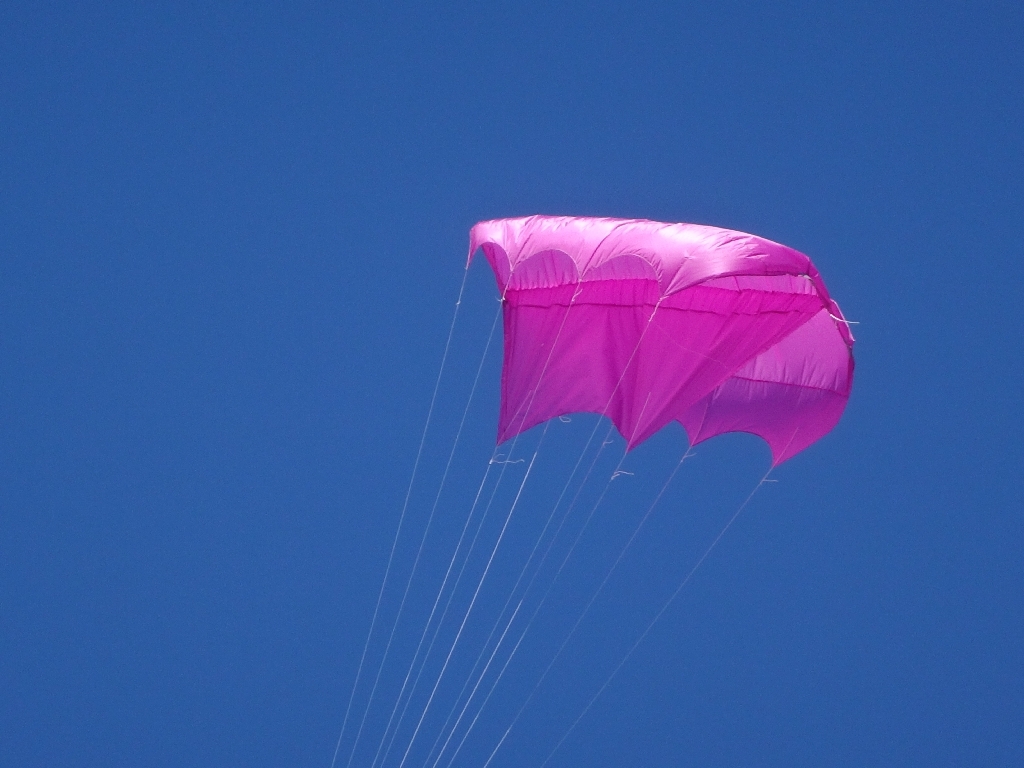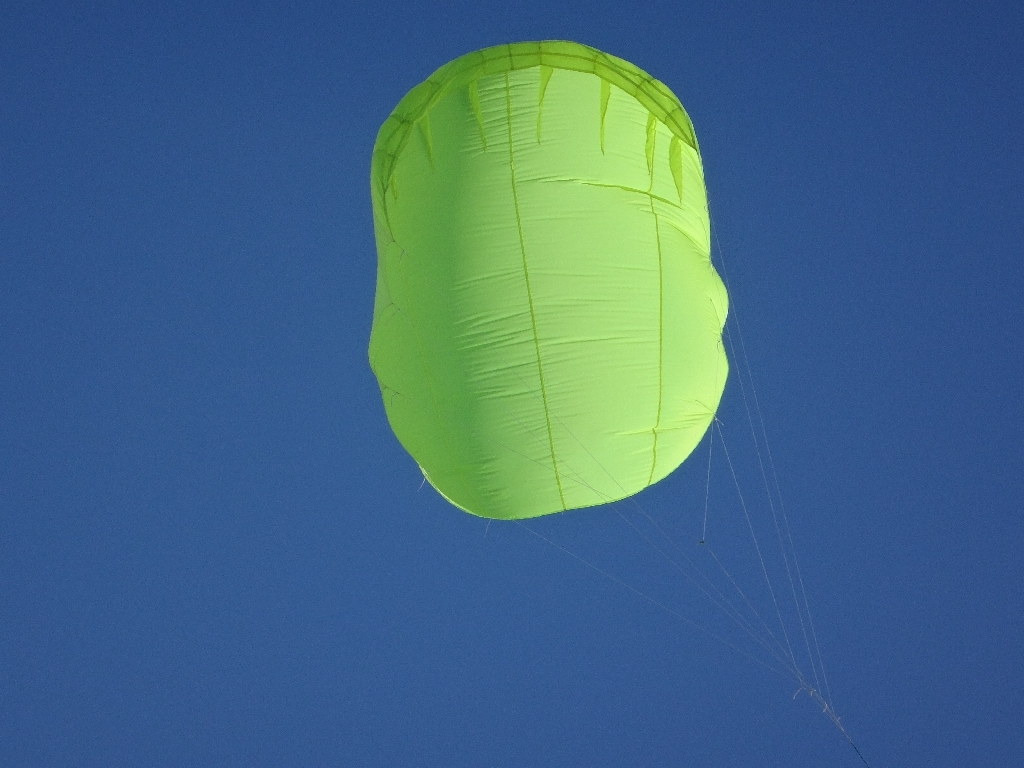 |
|
 |
NO STICKS, NO TUBES, NO RAM AIR INFLATION, NO TAIL, SINGLE LINE.
THE SSSL (SINGLE SKIN SINGLE LINE KITE) IS COMING TO YOUR KITE FIELD.
|
|
 SSSL 14 With Tail at Kedah SSSL 14 With Tail at Kedah
In this 21st century world, the capacity to innovate divides winners from losers; for nations no less than for individuals.
In response to this importance, various systems have been developed to make innovation less dependent on the occasional random connections between genius and opportunity that have been the main impetus for our rise as a species until recently.
Of these innovation systems , the dominant by use of resources is institutional: corporate, military, university and government. Institutions use standardised management techniques to run their innovation programs; goals, budgets, time lines, market projections, audits, and meetings.
When institutions are the gate keepers, actual innovators must spend most of their time chasing 'funding' (the word used by bureaucrats for other people's money).
And meeting 'reporting requirements'.
Except when they can short circuit the system by using political connections of course.
The scariest case study of institution-led innovation is probably the climate change innitiated drive to 'green energy' undertaken by Europe over the last 25 years or so.
After 100's of billions that could have been quite useful elsewhere, not only has Europe conspicuously failed to make any major breakthrough in green technology, but in the process they have locked themselves into energy pricing by which, for the next 15 years at least, businesses and households there will probably pay three times as much for electricity and twice as much for gas on average as their global competitors in the US and Asia.
Which may be the greatest threat to the European lifestyle since the mongol hordes were 100km from Vienna 773 years ago, and this time it's a threat that won't suddenly go away when the barbarians at the gates go home to choose a new khan.
On the other hand, during the last 15 years, China's entrepreneurial system HAS made a world changing green energy breakthrough ; by providing solar cells at a price that puts them within reach of being viable against traditional non-subsidised energy sources.
What was the European response to this?: The usual protectionist attempts to prevent access to their markets for this planet saving technology.
You've probably guessed by now that I'm not a great fan of the institutional approach to innovation (nor of European incompetence and hypocrisy, not to mention the disproportionate claims they make on the world's available food growing areas to support their silly organics and anti-GE food fetishes). But the institutional system can work quite well for incremental improvements to something that already exists- like the impressive improvements in car performance, comfort, safety, economy and emissions that the global motor industry has achieved in the last 100 years or so.
The other way to do innovation is the San Fransisco way.
If you have a clever idea, you can take it to there, make you pitch to some rich savvy people (rich because they've made heaps of money from being successful innovators themselves ), and if your idea seems good to them, even if you're socially awkward and politically unconnected, they'll give you enough to take it to the next level in return for a share of the rewards if it's successful. No stiffling beauracracy, just 'here's the money, now go out and make it work'. And if you can't, the tap doesn't turn on again for that idea. But if you can, there is no practical limit to the investment that can be channeled your way. And best of all, a failure or two doesn't poison the well- in fact successful entrepeneurs there all seem to have a few character building failures tucked away in their CV's.
What a great system, what opportunities, wish I was 30 years younger,
But I'm not, so late last year I had a very serious discussion with myself about an in-house equivalent.
It wasn't easy; it's always difficult to get get gumpy old men to part with their hard won time and money and I can be really difficult to convince sometimes, especially when I'm wrong.
But eventually I agreed with myself that a single skin single line (SSSL) kite might be possible and would be a useful thing, so I allowed myself to give it a try.
The advantages such a kite could have over ram air inflated styles are; requiring less wind, more pull for size, cheaper and easier to make and no internal spaces to collect water, snow or ice. Its advantage over framed kites is scalability (even carbon fibre framed kites become too heavy- or too fragile- above about 10 square metres).
The disadvantage is that its angle of attack will need to be uncomfortably high so as to hold the leading edge shape against wind pressure in the absence of either rigid struts or inflated spaces. As a consequence of this, its centre of pressure will of necessity be almost at the centre of gravity, making stability difficult to achieve.
A bonus is that kites with completely irrigid leading edges can use highly cambered sections without showing any luffing tendencies at all while kites with spanwise rigidifying elements in their leading edges (CQuads, parafoils and LEI's for example) luff* uncontrollably when they have highly cambered profiles. I belatedly noticed this when developing the Skin four line traction kites last year, but evidence for this (NPW's for example) has been out there for at least 30 years. The Skin has this desirable characteristic, as will the high perfomance (but complex and expensive) single skin traction kites that I expect to be available from various manufacturers soon (Flysurfer's Peak is on the market now).
I don't know why single skin kites have inherent luff resistance (lots of theories though, some of which have been covered in the patent application I made for the Skins last year), it's counter intuitive, but there are two very considerable advantages for the hooked- down leading edge profiles that can be used with single skin kites as a consequence of this characteristic: more pull for size (at least double), and lower stall speed (they fly in less wind).
 SSSL 14 And Everything At Kedah SSSL 14 And Everything At Kedah
Good wind range, excellent L/D, astonishing pull, but only adequate reliability so far when flown tailless. It's not quite of the style (sled) that I'd been striving for, but hey, I'll take the low hanging fruit for now and keep working away on other types.
Along the way I did get a single skin Arc style kite to a marginally useable level, but as for all the sled style attempts, tip collapse was always a lurking problem.
 SSSL 4 January 2014 SSSL 4 January 2014
Probably pilot and lifter kites.
And possibly wings for soft theme kites such as aeroplanes, dragons, birds, butterflies and etc- and maybe soft kite versions of Asian Wau type kites. Ram air inflated wings for all these styles have not generally been successful because of their unstoppable tendency to overfly the body and wrap around the kite's nose. Single skin wings won't do this.
At the least, SSSL's will be a new creative opportunity for kite artists (excuse me for a moment, I just have to go and wash my mouth out with soap).
And, of course, I've learnt some things that will further improve the Skin (4 line single skin traction kite).
 SSSL 14 At Kedah Side View SSSL 14 At Kedah Side View |
 SSSL 13 SSSL 13 |
 SSSL 14 at Kedah SSSL 14 at Kedah
Side View |
 SSSL 14 at Kedah From Rear SSSL 14 at Kedah From Rear |
 SSSL 14 at Kedah SSSL 14 at Kedah |
 SSSL 10 SSSL 10 |
 SSSL 11 SSSL 11 |
 Single Skin Arc Single Skin Arc |
PETER LYNN, SATUN, MARCH 1, 2014
* Luff; when a kite's angle of attack becomes suddenly negative and the line(s) go loose.
|
Peter Lynn Kites Ltd
105 Alford Forest Rd
Ashburton 8300
NEW ZEALAND
Ph: +64 (0) 3 308 4538 Fax: + 64 (0)3 308 1905
Email: peter@peterlynnhimself.com
Website : www.peterlynnhimself.com
To un-subscribe from "Peter Lynn Himself Newsletterss" please click [HERE],
Please do not reply to this email. If you wish to contact Peter Lynn, click the button below here.
Copyright Peter Lynn - all rights reserved.
|
|
|
 |